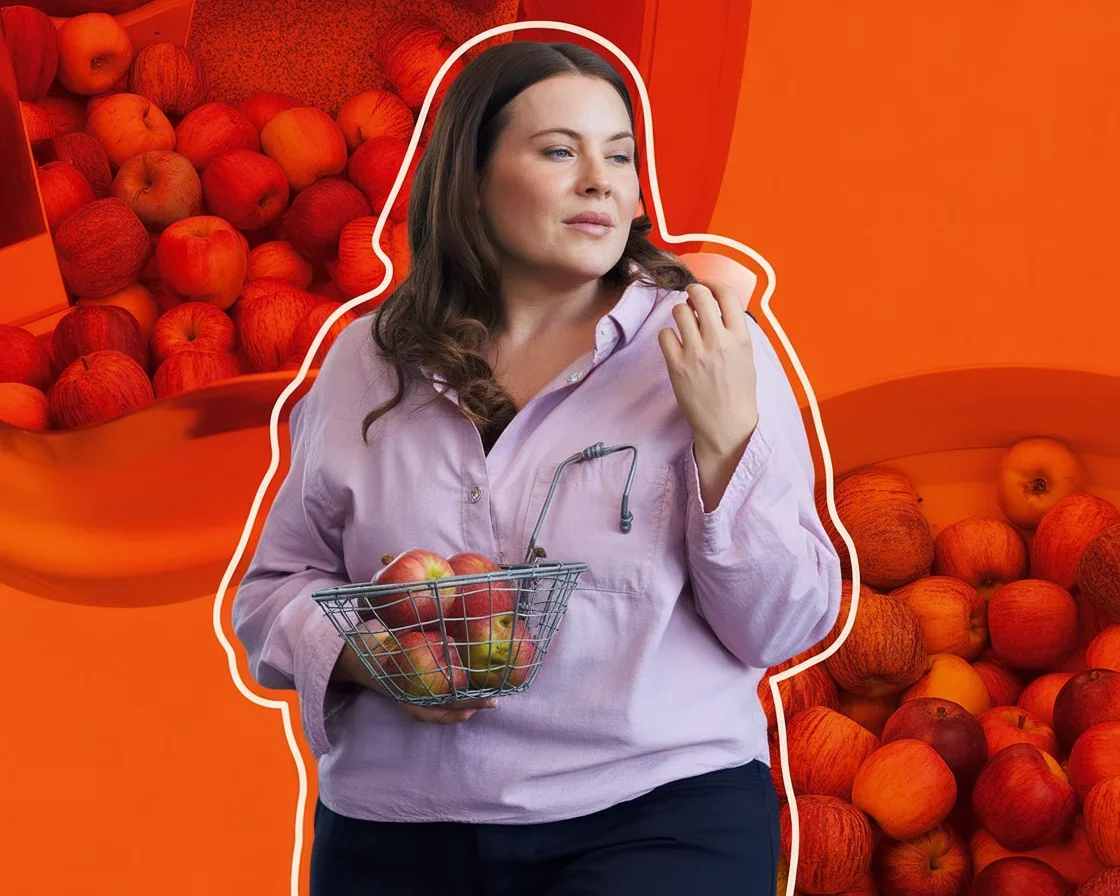- How do I calculate how many calories I need?
- How many calories should you eat on average?
- How to reduce calorie intake
- Calorie Counting as a Means for Weight Loss
- Calories: Different Kinds and Their Effects
- Common Questions
- Ready to Start Your Own Journey?
How to calculate calories for weight loss female? Yeah, figuring that one out used to totally baffle me. I’d stand in the kitchen—hungry, frustrated, and poking my stomach—wondering how all these numbers could possibly help me get anywhere. My friends chat about “calorie deficits” and “maintenance levels” like they’re telling you about the weather. Me? I used to just want something simple. It’s a bit like peeking into the best exercise for toning up and still ending up confused, right? If you’ve ever needed a straightforward way to nail down your calories, especially as a woman looking to lose weight, stick around. Wanna know more about how to create a healthy eating plan or what type of best food for fat loss actually works? Got you covered with some friendly tips.

How do I calculate how many calories I need?
Okay, let’s get real. This is the million-dollar question! Figuring out the right calorie amount can feel like a Sudoku puzzle before coffee. Honestly—every app spits out a different number and your bestie’s advice barely matches yours.
Here’s what I found actually works: Start with your basic information. That means you need your age, height, weight, and how active you are. There’s a little equation called the Basal Metabolic Rate (BMR) that tells you the calories your body burns just lying around. Add on activity, and you get something called TDEE (Total Daily Energy Expenditure). Yikes, sorry for all these acronyms—but I promise, it’s less scary with a calculator. If you want a shortcut, online calorie calculators (like on trusted sites) can help you get those numbers fast. It’s wild how much difference your activity level makes. I once switched my job from standing all day to sitting and, whoa, my calories dropped right off a cliff! Listen to your energy, too—being “hangry” all the time isn’t the goal.
My tip? Check out what works by trying it for a week, then adjust up or down. Bodies are quirky like that.
“I always thought more exercise just meant eat more. Turns out, figuring out my real numbers helped me lose the first ten pounds—and I finally felt like I was in control!” —Melissa, a happy reader

Get Img & Url
Get Img & Recipe
How many calories should you eat on average?
Here comes the awkward honesty: there’s no official calorie number that fits every woman. You’ll hear “eat 1200 calories!” way too often, but for a lot of people, that’s not enough to keep you from gnawing your own arm off.
Most adult females generally need somewhere between 1500 and 2000 calories per day to maintain their weight, if they’re moderately active. If you’re aiming for weight loss, you’d shave off 200 to 500 calories from your maintenance total. Sounds simple, right? But if you start way too low, you’ll end up exhausted (and maybe cranky). I’ve watched a friend try ultra-low calories—she gave up after a week and ate a whole pizza herself. Don’t do that to yourself. Your life, your body, your needs. Remember, focus on slow and steady progress rather than big, crash-diet drops.

How to reduce calorie intake
Ahh, the true test. I’m gonna be honest—with best intentions, we’ve all blown our calorie goals with just one “harmless” snack. Happens to me with chips, every single time. Cutting calories isn’t about torture. It’s more about small swaps and clever ideas.
Things that work for me:
- Fill half your plate with veggies (they’re filling but light).
- Choose water instead of sugar-loaded drinks—seriously, that soda adds up.
- Watch portion sizes. I used to lap up double servings—now, I measure just for fun (plus, it’s an eye-opener).
- Save treats for when you really want them.
The best part? None of this feels like punishment once you get the hang of it, pinky promise.

Get Img & Url
Get Img & Recipe
Calorie Counting as a Means for Weight Loss
Look, calorie counting gets a bad rap sometimes—yeah, it sounds nit-picky and, let’s be honest, a little tedious. But hang with me. Because, for me, it’s like using Google Maps the first time you go somewhere new. Kinda annoying, kinda genius.
You start by jotting (or typing) down every bite. The first week, you’ll probably discover that your favorite “healthy granola bar” rivals a slice of cake in calories. Oops. But that’s the magic: tracking means seeing patterns you’d never have noticed. Over time, you don’t need to count every single morsel. You just get a sense of how much you can eat and still reach your goals. Some swear by apps. Others use good old-fashioned notebooks. Me? I’m somewhere in the middle—sometimes digital, sometimes scribbled at the kitchen table. It’s not forever. But it’s so enlightening.
Calories: Different Kinds and Their Effects
Not all calories are equals. Crazy, right? I thought a “calorie is a calorie”—until I learned that 100 calories from leafy greens feels way different than 100 calories from cookies. One leaves you satisfied and energized—the other makes you want a nap.
You want calories that have nutrients along for the ride. I’m talking proteins, healthy fats, and loads of fiber. They keep you full, keep your energy from dipping, and help you dodge the mid-afternoon slump. Yeah, you could technically eat 1600 calories of candy bars and call it a day, but you’ll probably feel terrible by dinner. Aim for balance, not perfection.
Common Questions
Q: Is calorie counting necessary for weight loss?
Not at all! It helps give you info about what you’re eating, but you can lose weight with mindful habits instead of detailed counts.
Q: Can I just eat less, or do I need to exercise too?
You can lose weight by just eating less. Adding exercise helps, plus it’s great for mood and health.
Q: How fast will I see results if I cut my calories?
Usually, you’ll notice some changes in a week or two. But everyone’s body does its own thing—don’t worry if results feel slow at first.
Q: Do low-calorie diets work for everyone?
Nope. Some folks get tired and cranky quick. Find the balance where you feel energetic, not exhausted. If you’re not sure, chat with a pro (worth every penny sometimes).
Q: Can I still eat my favorite foods and lose weight?
Yes! Fit them in occasionally (just not every meal), and you’ll feel way less deprived.
Ready to Start Your Own Journey?
Figuring out how to calculate calories for weight loss female style can feel like wrangling a wild horse—but it’s totally doable with a little experimenting and a lot of patience. Keep it practical, check in with yourself, and use handy resources like the Calorie calculator – Mayo Clinic or the easy-to-use Calorie Calculator. If you want even more breakdowns on daily needs, this Weight Loss Calculator is actually super user-friendly (and less intimidating than you’d think).
So… go for it! Be curious, stay flexible, don’t let a bad snack mess with your mood. Seriously, if this food-obsessed gal can do it, so can you.
Print
Calorie Calculation for Weight Loss
- Total Time: 10 minutes
- Yield: 1 informative session
- Diet: General
Description
A comprehensive guide on calculating calorie needs for weight loss specifically tailored for women, featuring tips and insights on effective calorie management.
Ingredients
- Basic information (age, height, weight)
- Activity level assessment
- Calorie calculators
- Portion measuring tools
- Vegetables and healthy snacks for swaps
Instructions
- Start by gathering your basic information: age, height, weight, and activity level.
- Use a Basal Metabolic Rate (BMR) calculator to find out your calorie needs at rest.
- Add your activity level to calculate your Total Daily Energy Expenditure (TDEE).
- Adjust your calorie intake by reducing 200 to 500 calories for weight loss.
- Monitor your energy levels and adjust as necessary to avoid feeling deprived or exhausted.
- Incorporate small swaps for healthier options and track your food intake to identify patterns.
- Be flexible and experiment to find what works best for your body.
Notes
Calorie counting isn’t necessary for everyone, but it provides valuable insights for many. Focus on nutrient-rich calories rather than just quantity.
- Prep Time: 10 minutes
- Cook Time: 0 minutes
- Category: Dietary Guidelines
- Method: Planning
- Cuisine: N/A
Nutrition
- Serving Size: Individual Assessment
- Calories: 1500
- Sugar: 10g
- Sodium: 200mg
- Fat: 30g
- Saturated Fat: 5g
- Unsaturated Fat: 15g
- Trans Fat: 0g
- Carbohydrates: 200g
- Fiber: 25g
- Protein: 60g
- Cholesterol: 50mg
Keywords: calorie counting, weight loss, healthy eating, nutrient balance, dietary tips

